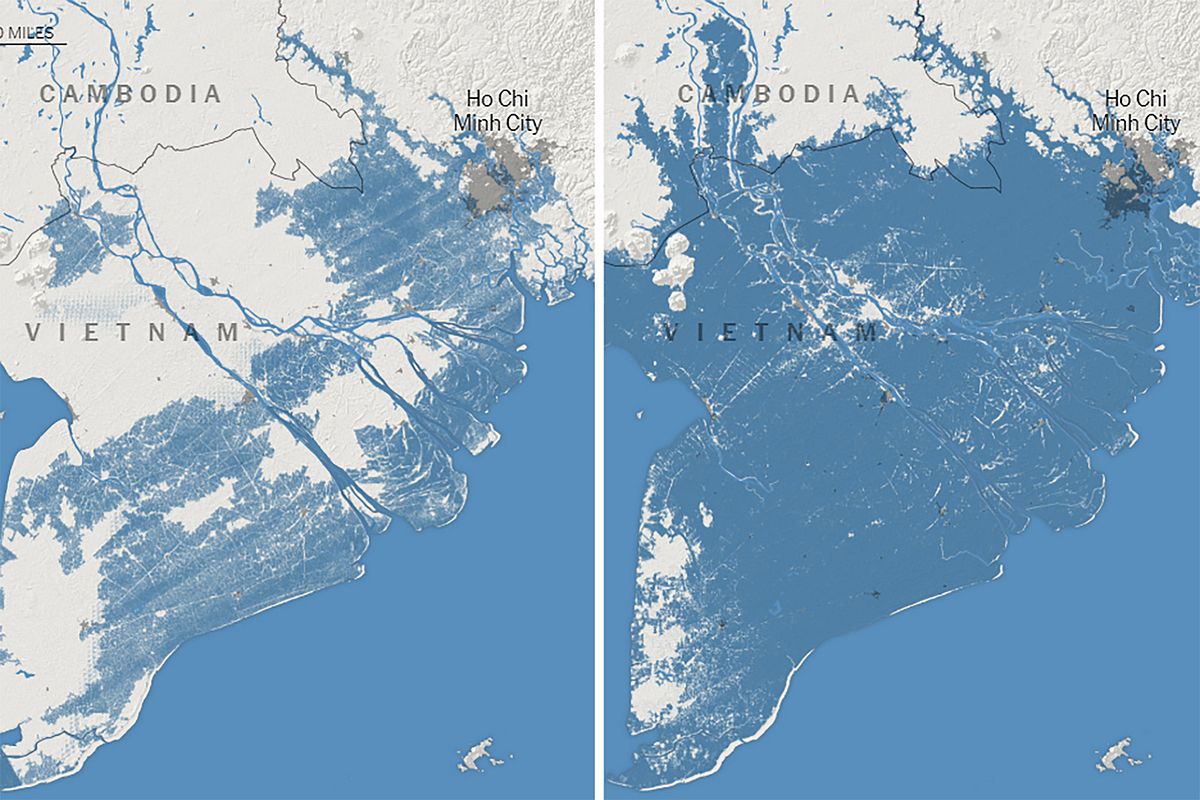A new report from Moody’s Investors Service points to a long-term credit risk from sea level rise in Vietnam.
The United States-based ratings agency said in its January 16 report that “Sea level rise poses long-term credit threat to a number of sovereigns,” while Vietnam has one of the world's largest amount of people whose living areas would be submerged, the Saigon Times reported.
According to the report, Saigon is one of the most-exposed cities to sea level rise, whether measured by the share of the population, land area or economic activity threatened.
Measured in terms of gross domestic product (GDP), the World Bank has indicated that that exposure is greatest in Vietnam (10.2% of GDP), followed by Egypt (6.4%), Suriname (6.4%) and Benin (5.6%).
The ratings agency took into account a broader view of exposure by merging GDP with several other indicators (population, land area, agricultural area, degree of urbanization and wetlands), and “Vietnam, Egypt, Suriname and the Bahamas feature among the most exposed countries."
Moody’s further explained that sovereign credit implications of sea level rise are wide-ranging from immediate to long-term.
The immediate nature of the risks include “economic and social repercussions of lost income, damage to assets, a loss of life, health issues and forced migration from the sudden events.” In the long term, it can also “undermine investment and heighten susceptibility to event risk, by hindering the ability of governments to borrow to rebuild, increasing financial risks, raising external pressures, and/or amplifying political risk as populations come under stress and institutional capacities are tested.”
Other recent research by Climate Central with a different calculation model found that almost all land in southern Vietnam, reaching as far as Saigon and Vung Tau, will be below the high tide line by 2050 if no major action is taken to stem rising sea levels.
The researchers also determined the areas most at risk for annual ocean floods and flooding from sea level rise are concentrated in Asia, notably China, Bangladesh, India, Vietnam, Indonesia and Thailand. These regions have the most people living on land below coastal flood levels.
While past responses to flooding in the city have been considered rather inadequate, a number of projects have focused on adapting to flood stresses, including upgrading the municipal sewerage system.















